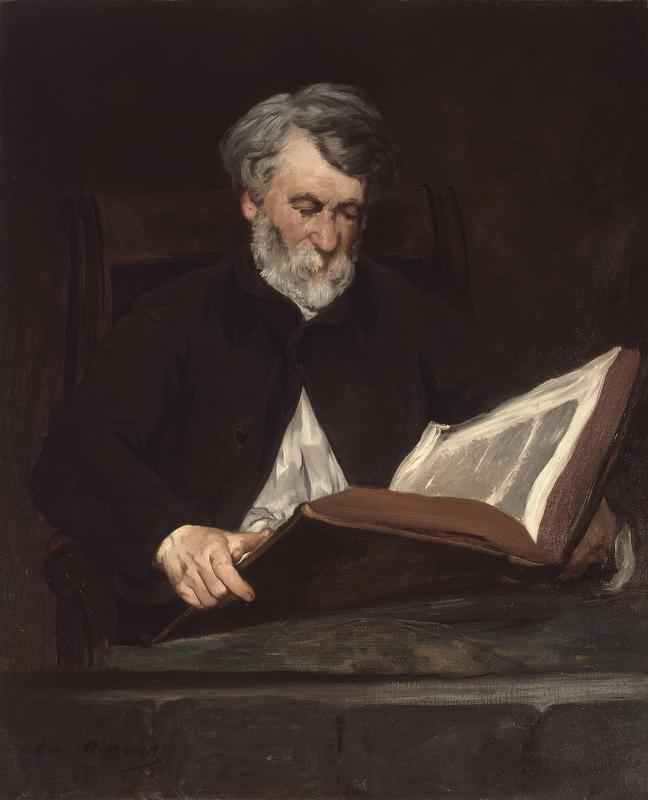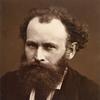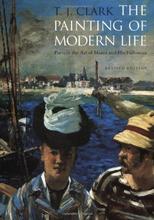More about The Reader
- All
- Info
- Shop

Contributor
Calling this painting The Reader is perhaps a bit of a misnomer, as the guy featured, Joseph Gall, was actually a painter.
This is not to say that people cannot have multiple hobbies. Or to say that we need to be defined by a singular and solitary pursuit in our wild and precious lives. Édouard Manet, for example, took piano lessons, but no one goes around referring to him as “Manet the Pianist.” Humanity is multifaceted. We contain multitudes.
While Gall’s own career as a painter was a modest success, he’s not exactly well remembered by art historians, especially compared to Manet. Little of his work has survived, and the pieces that have are not available for public display, making it difficult to gain a sense of his body of work. So, though there may be a small and as yet undiscovered circle of die-hard Joseph Gall fans out there, don’t expect a Joseph Gall retrospective at your local art museum anytime soon. If you were going to give him another title, “The Model” would be a better fit than “The Reader,” as this is not the only painting that he sat for. For example, in another of Manet’s paintings, The Smoker, he appears with a pipe and an even bushier and more impressive beard.
A first glance at this piece may make it seem as though Manet really screwed up the sense of scale, as the book in this painting appears to be roughly the size of our man Joseph’s torso. But the tome's massive size is probably an accurate depiction, indicating that the book was likely a folio edition from Gall’s own library. Folio-style printings were typically original prints and tended to be much larger in size than modern-day books; they would often contain two pages of text, side by side, on each sheet. Famous folios include the Gutenberg Bible and Shakespeare’s First Folio. Some folios, like royal folios, could be up to 20 by 12 inches— which, if you do the math, means they could fit about nine Kindle Paperwhites on a single page. Wild.
Unlike Gall’s aforementioned facial hair, the painting itself is fairly restrained, making use of muted colors and attentive, detailed brushwork. Here, Manet uses contrast to create interest rather than color, letting the starkly pale skin and hair of his elderly friend (sorry, Joseph, but you do kind of need a tan) exist in tension with a much darker backdrop.
Sources
- An Explanation of Book Sizes and Terms. (n.d.). Retrieved April 22, 2021, from https://www.harringtonbooks.co.uk/booksizes.php
- Joseph Gall. (n.d.). Retrieved from https://www.mutualart.com/Artist/Joseph-Gall/C54721087FCC9388
- Solomon, T. (2020, April 30). Édouard Manet Is Considered the Father of Modernism. Retrieved April 22, 2021, from https://www.artnews.com/art-news/artists/why-is-edouard-manet-important…
- Édouard Manet, the Reader, 1861. (n.d.). Retrieved April 22, 2021, from https://frenchart.umsl.edu/home/english/nineteenth-century/edouard-mane…













I like this painting because I like reading. I know what it is like to have a book cracked open and finding out what is happening in the story. I also think the subject has a cool beard and mustache. I have always struggled with drawing or painting people as subjects, so I commend the artist on this painting. It is interesting how he used all darker colors in the painting. It gives the whole work a darker more dreary feel in my opinion.